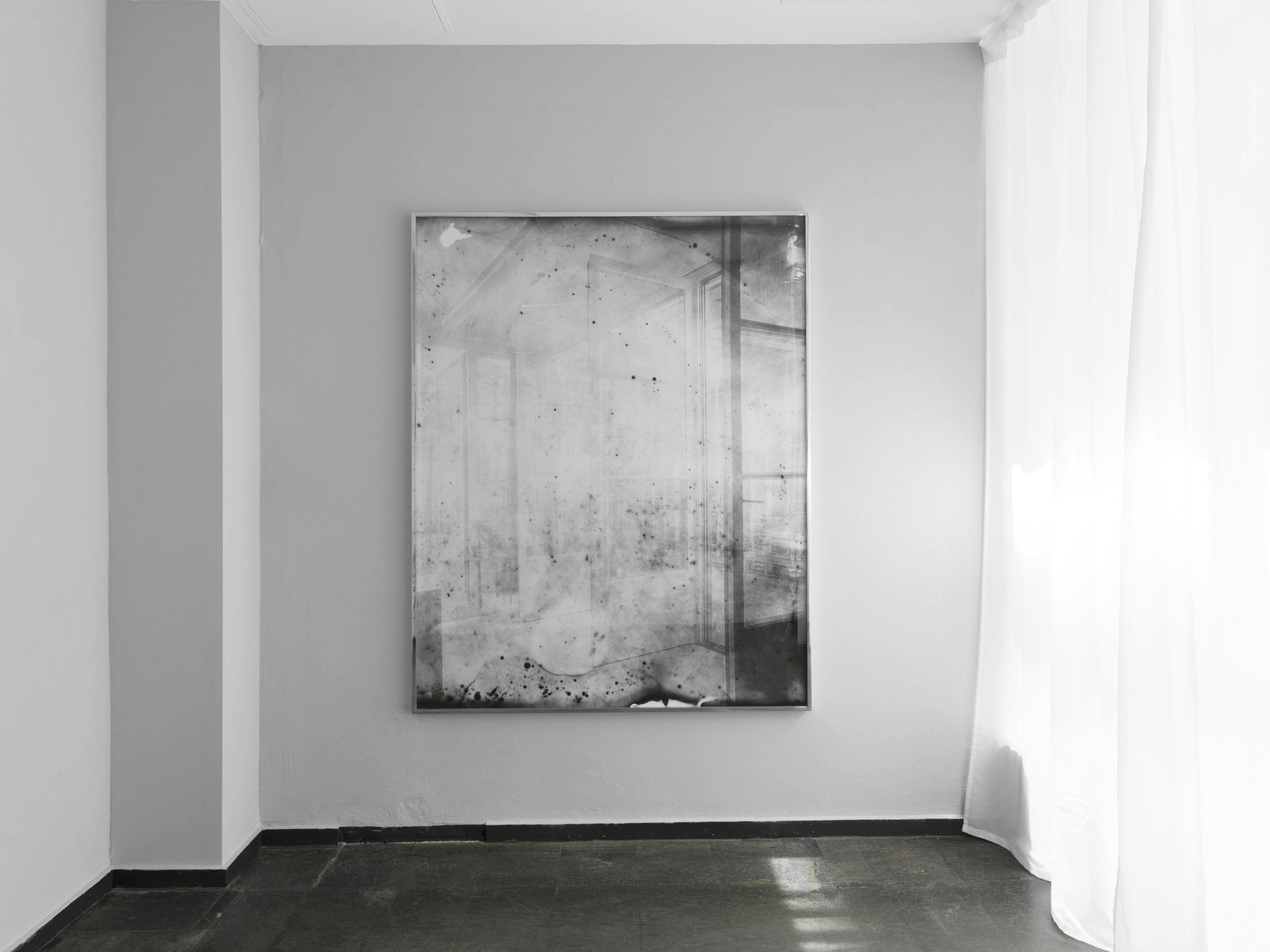
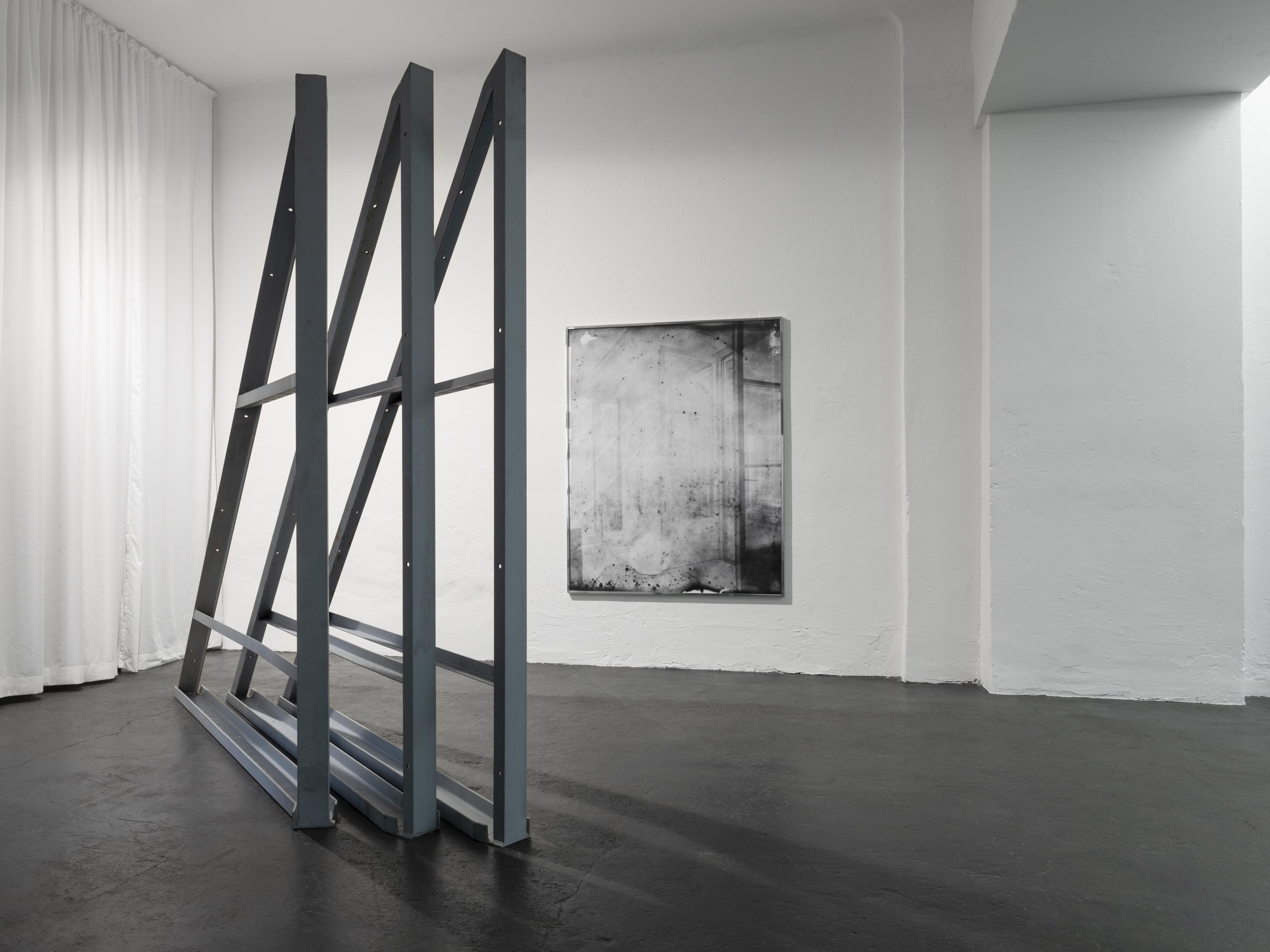

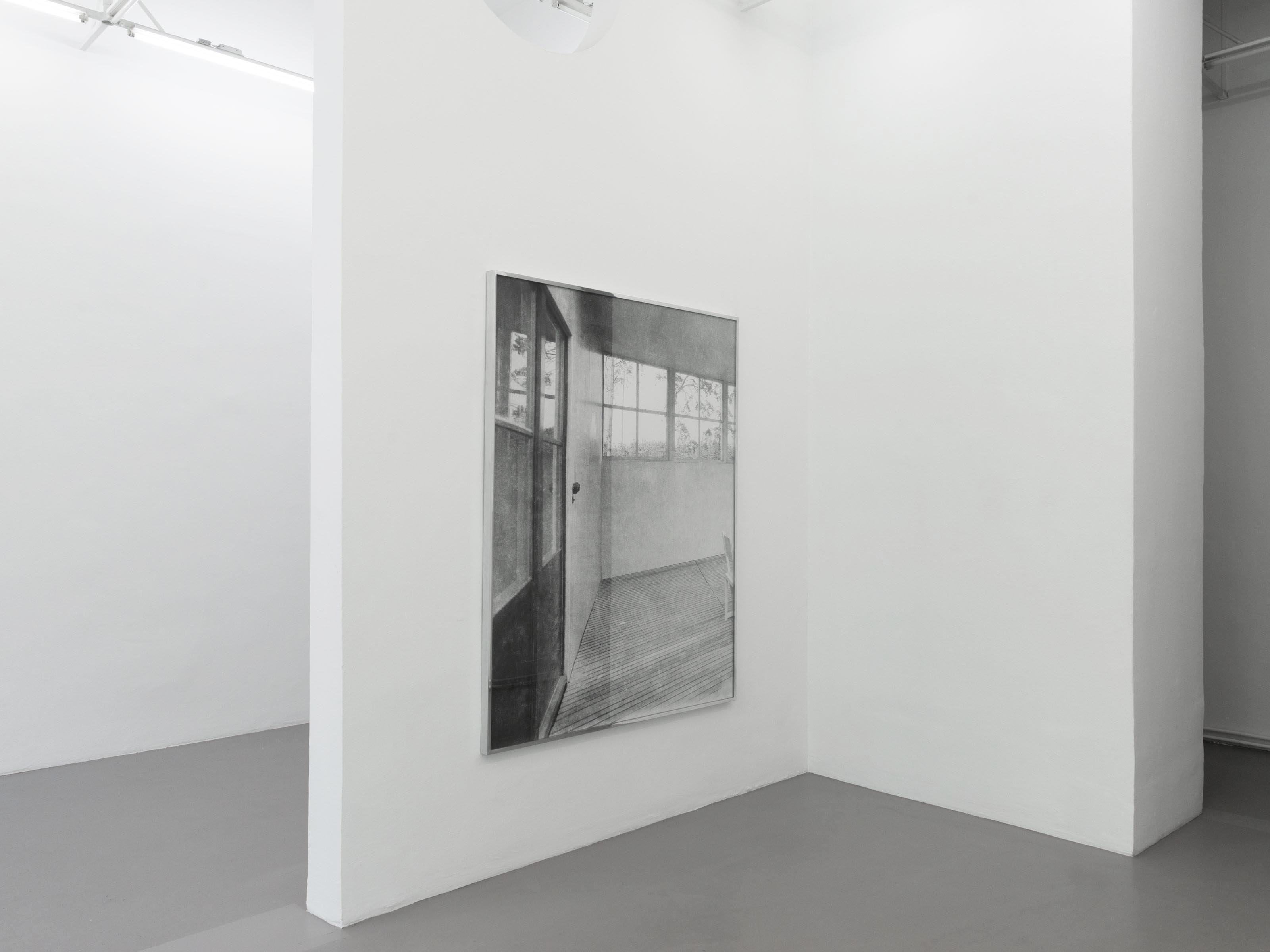
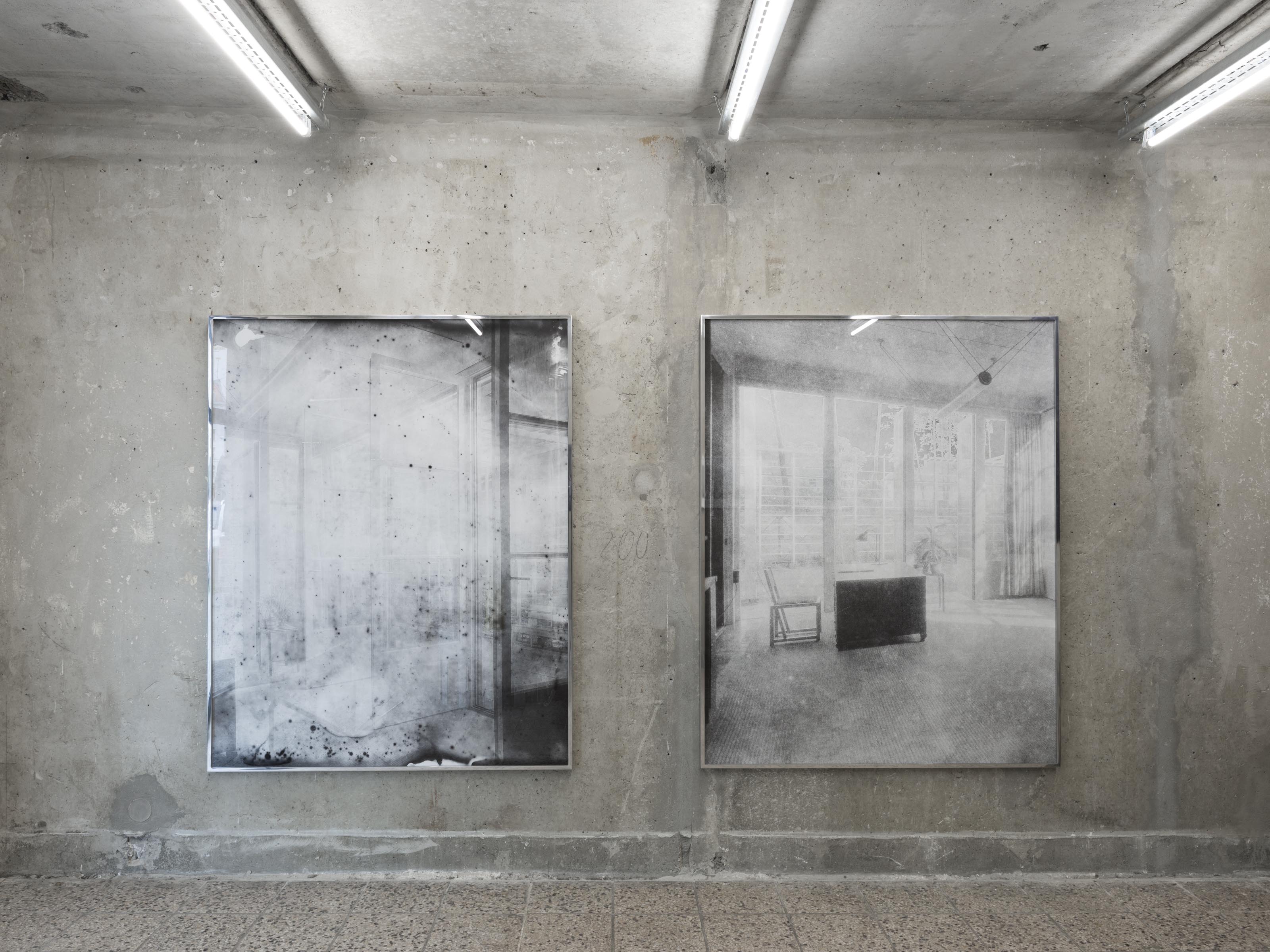
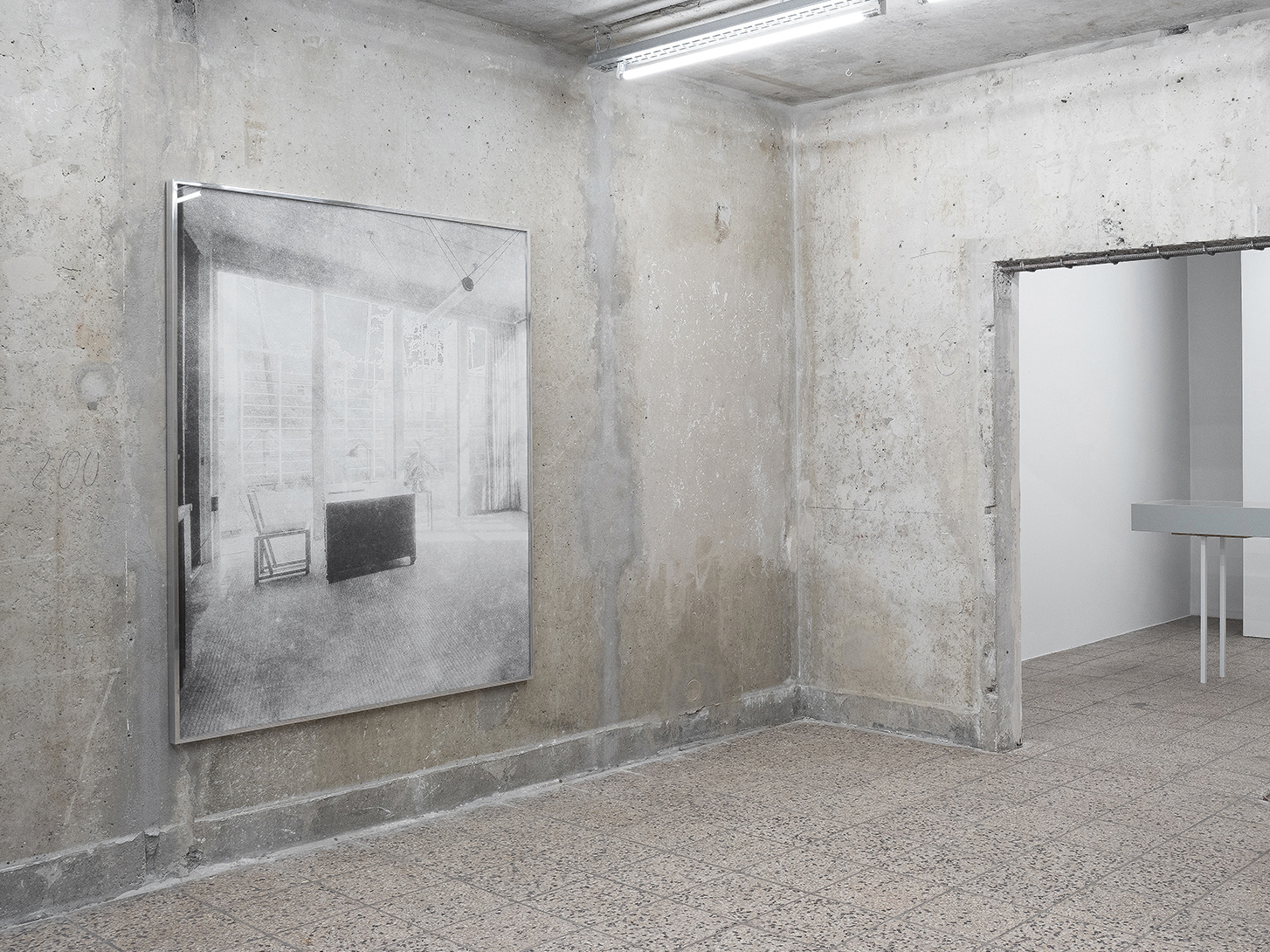
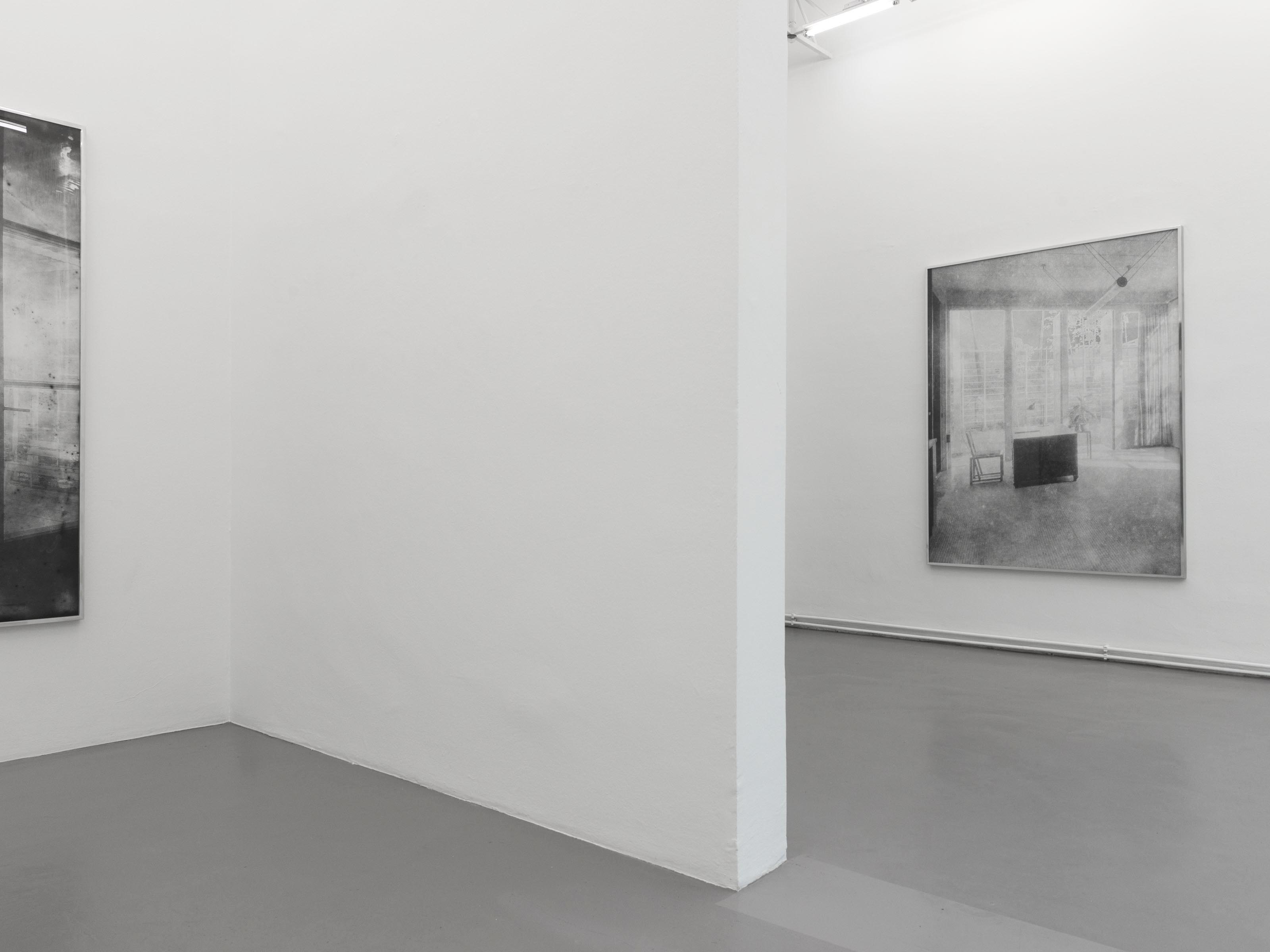
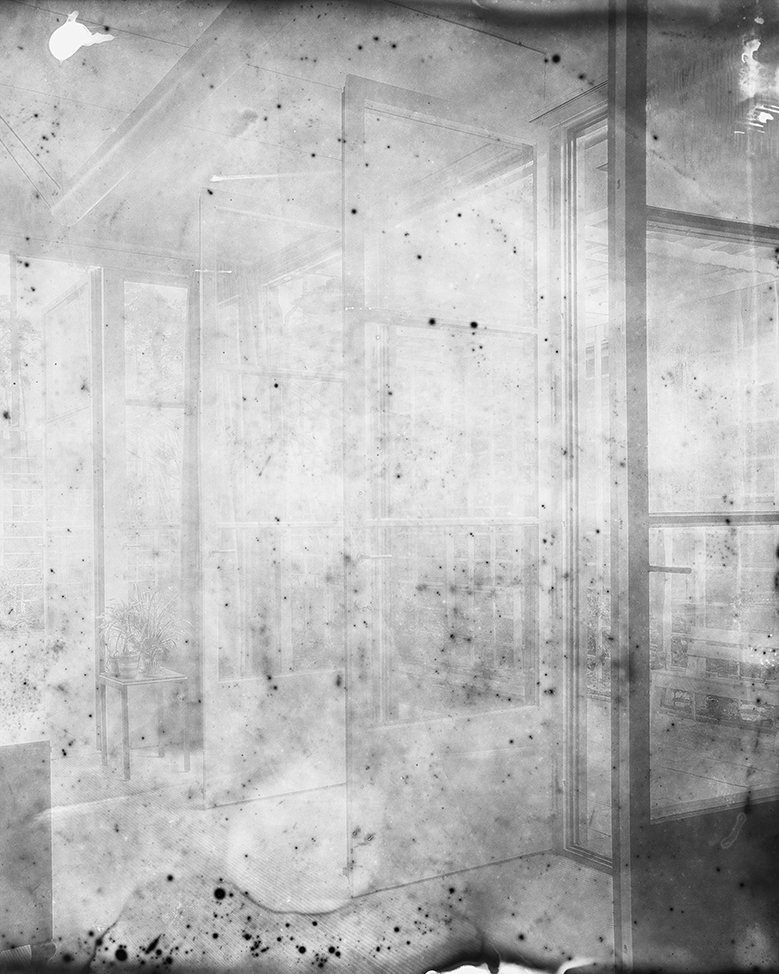
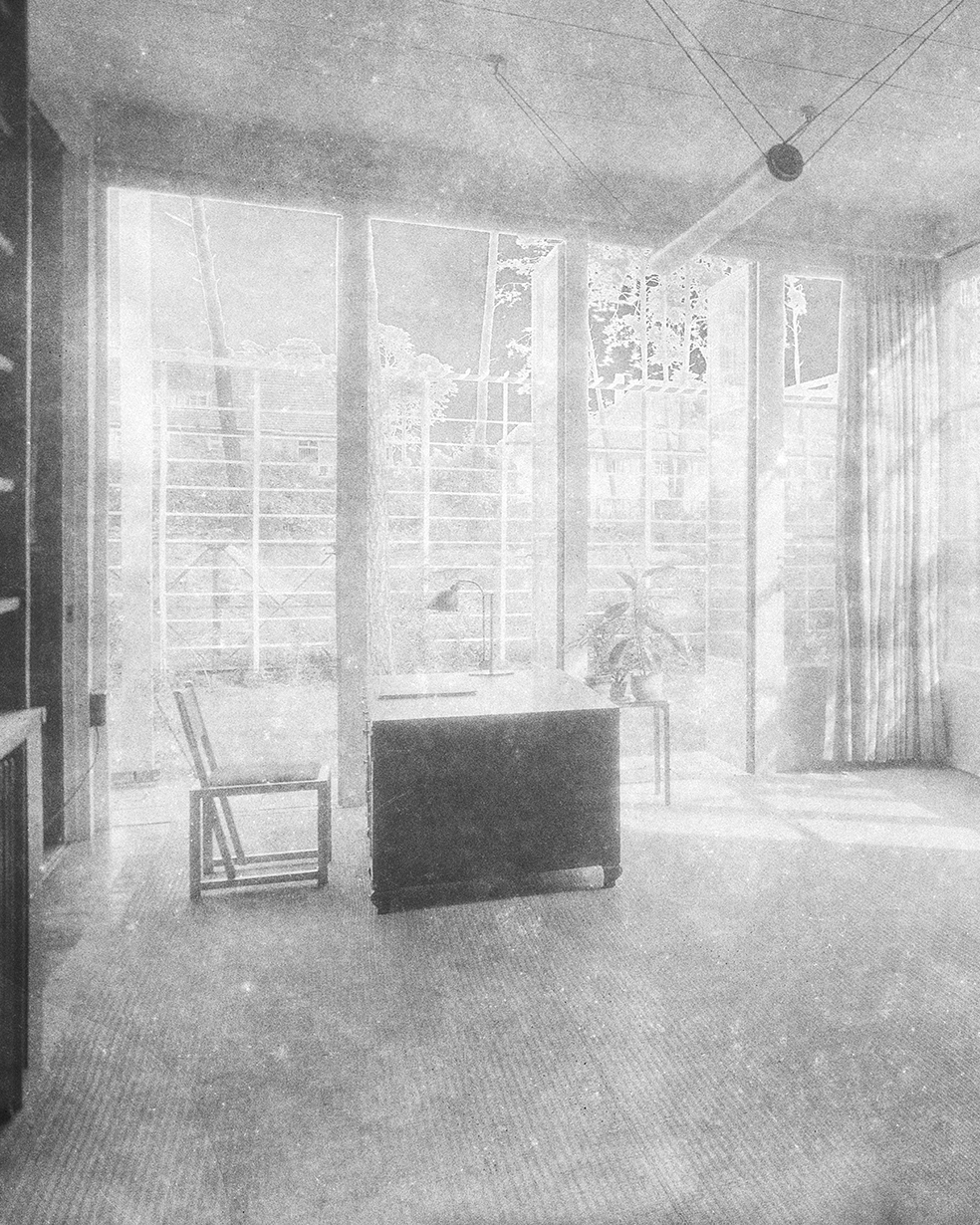

PHANTASMA (2022)
After thousands of years of existence, in 2015 the Temple of Bel in Palmyra was destroyed in a split second by ISIS. This event affected me deeply. I was not so much interested in the obvious circumstance of the political symbol, the demonstration of power and superiority, but rather the irretrievable erasure of a place that existed and suddenly no longer exists.
Buildings, especially historical ones, hold for me the appearance of indestructibility, simply because they exist despite their age.
This final monstrous and at the same time trivial act of demolishing the Temple of Bel (Baal), has deprived me of this naive and perhaps childlike imagination. As a result, I have intensively studied iconoclasm – the destruction of cultural products often architecture.
PHANTASMA, Haunt (2022), Berlin
Die Möglichkeit einer Insel (2023), Berlin
DIT VIENNA (2023)
Galerie HOTO (2023), Berlin
Phantasma (2022), HR1, HR2, HR3, 170 x 135 cm
Pigment Print
In the Baukunstarchiv of the Akademie der Künste I came across Harry Rosenthal, a Berlin architect of the modernist period, who was known for his artists houses and private villas.
In his extensive estate I found some negatives that were of particular interest to me. These showed the studio house of the literary figure Arnold Zweig. Harry Rosenthal had completed this house in 1931 and had the entire construction documented photographically.
After the expropriation of the building by the Nazi general Kaupisch in 1938, the building was changed to such an extent that few of its original form is recognizable nowadays. Kaupisch wanted to eradicate the »eyesore« and adapt the building to the new German aesthetics. I was eerily drawn into this extinct place, with rooms that can only be entered mentally. But it took me a few years to figure out how I wanted to deal with it.
Since I cannot physically visit the studio house myself, I did this in a figurative sense by wandering through the photographs of the thirties. I immersed myself in the landscape format, very wide-angled photographs, in order to formulate cutouts that express my personal view.
I made a picture within a picture, one that corresponded to my point of view and my focus. The new upright formats are for me like doors into this past world, they hide what lies outside their frame, but at the same time direct the view to what is essential for me.
The title Phantasma describes a sensory illusion, a ghost. A phantasm is intangible and remains in the vague, perhaps it is the memory of a place where one has never been.
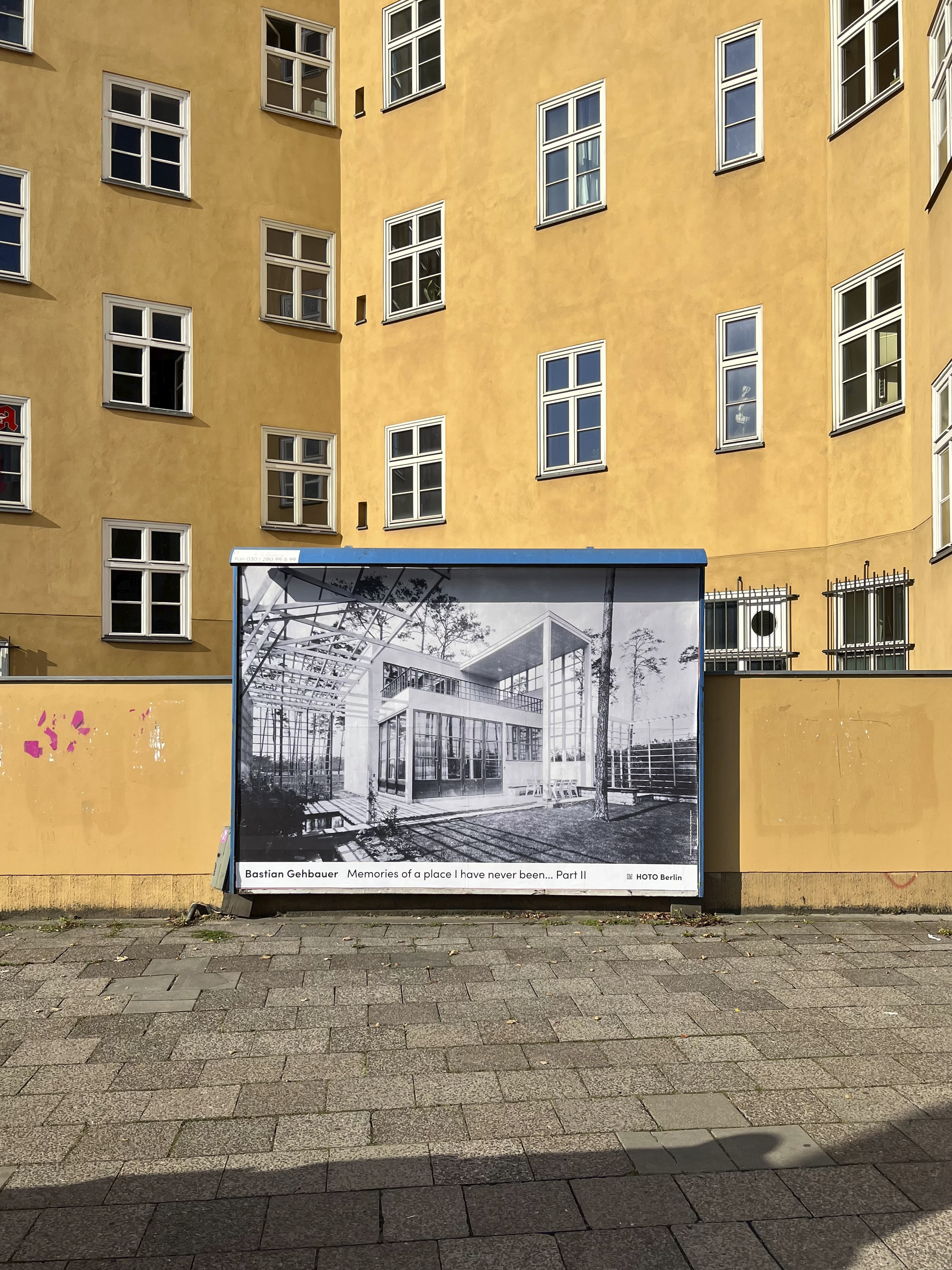
Public Intervention
© Bastian Gehbauer & Baukunstarchiv der Akademie der Künste Berlin
Haus Zweig by Harry Rosenthal